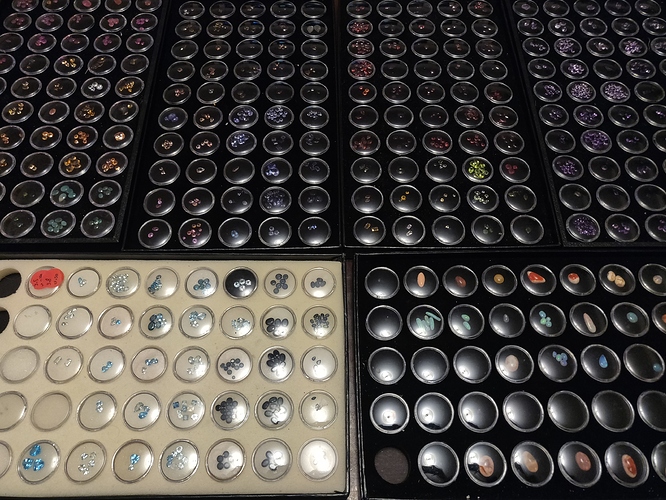After poking at this project for the last year, I have finally sorted through my endless jar of gems and am looking for advice on my next step. Here’s how the story goes.
Many moons ago, a coworker came to me with a mason jar loaded to the lid with colored gemstones… He was one of those storage locker auction kinda fellas and this mason jar was one of his latest plunders. He said it was just a paperweight to him and sold me the jar for $100. It was a gamble for sure, but after taking them to a GIA cert. Gemologist, was relieved to discover that all of the gemstones were genuine and in relatively good condition for being stored in a glass jar like they were. So began the sorting…
Over the last 12 months or so, once or twice a week, I would sit down with a small handful and sort them into groups. First by type, then shape, then size. Setting aside gems with obvious chipping or scratch damage. As of last night, I have completed this phase of the project.
My eventual goal is to list them in small item lots on ETSY and start offloading them bit by bit. Being a jeweler myself, I have gone to Etsy many times to buy the oddball stone for a custom job, and I know people would buy them. It will take a while, but I believe I can get rid of most of them this way.
The part I am struggling with is making sure I identify them properly. I’ve been a Rockhound for 10+ years and a jeweler for 6, so Im pretty confident in my gemstone knowledge. However there is a solid %15 - %20 of the jar that I’m a little unsure about. It’s too many to take to an expert for identification, and too few to ignore. stones like amethyst, Garnet, sapphire, aqua, peridot, are easy and completed, but there’s foresty green, champagne yellow, and pink stones that I just can’t seem to indentify…
Does anyone here have ideas on how to finish identifying the remaining oddball gems, or other potential outlets for selling them?
Thanks for reading,
Jake
